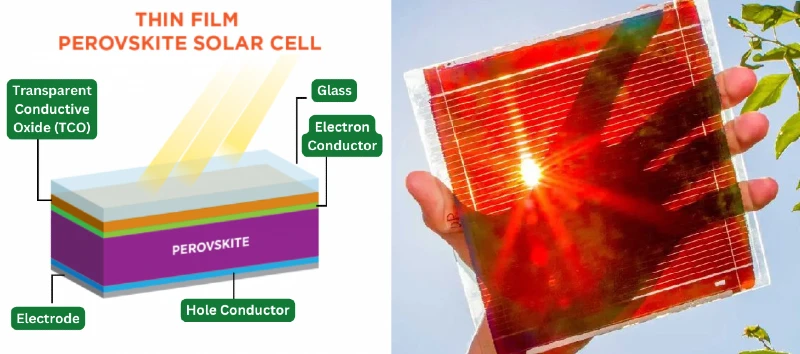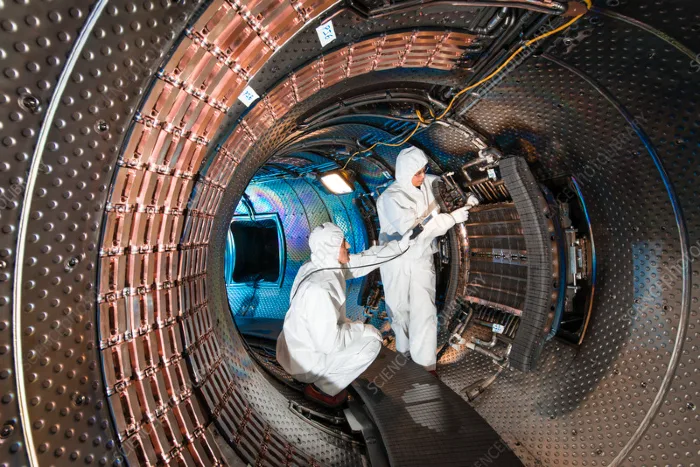The Dawn of Silicon-Free Solar Panels
In a groundbreaking shift towards sustainable energy, the world is witnessing the birth of the first-ever silicon-free solar panels, marking a significant stride towards energy independence and a sustainable future. These new panels, not only promising to power homes but also poised to redefine national energy strategies, herald a new era in the quest for clean energy.
A Leap Forward with Perovskite
Derived from a mineral first unearthed in Russia’s Ural Mountains back in 1839, Perovskite is now at the forefront of solar technology innovation. Its unique crystal structure allows for more efficient light absorption and charge generation compared to traditional silicon-based panels. This revolutionary material sits between two electrodes within the cell, where it plays a pivotal role in electron flow and energy conversion when exposed to sunlight.
The Path to Enhanced Efficiency and Reduced Costs
The University of Michigan’s recent breakthrough in solar technology leverages the remarkable properties of Perovskite. These new panels are not only transparent and incredibly thin—measuring merely 2 micrometers, roughly 20 times thinner than a human hair—but also flexible. This innovation stems from a novel roll-to-roll deposition process on a flexible plastic substrate, making the panels both lightweight and semi-transparent.
Thanks to this crystal-like structure, the covering has the ability to absorb light at different wavelengths. The new solar panels have achieved laboratory efficiencies as high as 25%, rivaling, and in some cases surpassing, traditional silicon cells.

Why Silicon Might, Hopefully, Take a Back Seat
Moving away from silicon could solve several significant challenges currently facing the solar power industry. Perovskite solar cells not only boast higher efficiencies—reaching up to 25% in lab conditions compared to the 20-22% maximum of silicon panels—but also offer potential for even greater performance, with projections soaring to over 30%.
The compact nature of Perovskite cells allows for a much smaller surface area, which significantly reduces production costs. This makes high-speed mass production feasible, providing a substantial cost advantage over silicon-based alternatives.
The recent perovskite solar cells provide major superiority they have over the traditional silicon solar panels. Undoubtedly, perovskite solar cells produce electricity at a much higher count per absorbed sun electricity.
Overcoming Global Challenges with New Material Sciences
More To Discover
- The Ocean Holds Over $500 Trillion Worth of Uranium and Scientists Just Discovered How To Harvest It For Sustainable Nuclear Fuel
- Atlantic Circulation At High Risk: Possible Collapse of Atlantic Currents Could Unleash Havoc on Europe
- Yellowstone Faces ‘Zombie Deer Disease’ Threat, Scientists Warn of Human Risk
- UK Launches Investigation into Dove Parent Unilever’s Green Claims
While the shift to Perovskite represents a substantial technological leap, the search continues for even more efficient materials, such as those based on titanium or rare earths. However, reliance on rare earths poses its own set of challenges, primarily due to market dominance by specific global players like China, presenting another hurdle for the renewable energy sector to overcome.
As we stand on the brink of a renewable revolution, these silicon-free solar panels not only highlight the rapid advancements within the field but also underscore a collective move towards an eco-friendlier and more sustainable future. With ongoing research and development, the potential for these innovative materials to dominate the solar power market grows, signaling a bright future for global energy strategies.




















